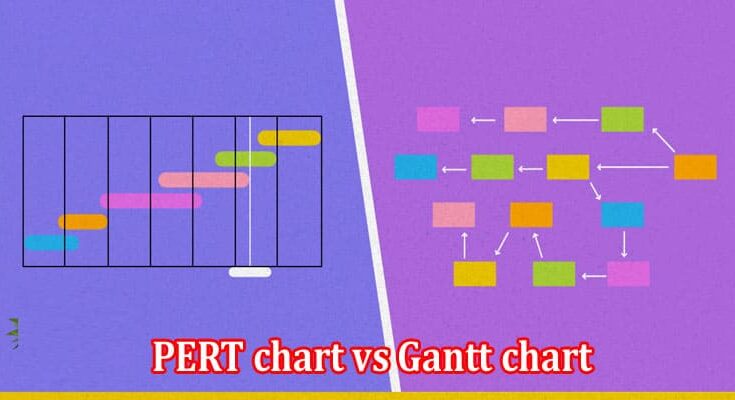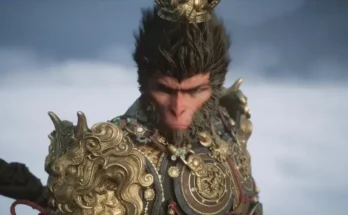PERT charts, which stand for “Program Evaluation and Review Technique” charts, and Gantt charts, which stand for “Gantt chart,” are two of the heavyweight contenders in the constantly shifting landscape of project management. These visual powerhouses serve as cornerstones in the arsenal of the project manager, offering distinct advantages for the purpose of planning, monitoring, and carrying out projects with pinpoint accuracy. In this all-encompassing piece, we set out on an adventure to demystify the world of PERT charts and Gantt charts by illuminating their distinctive qualities and advantages, as well as the art of selecting the most appropriate method.
PERT charts can be deciphered to reveal the elegance of uncertainty
The PERT chart shines as a ray of light in the field of project management, which is characterized by a high degree of unpredictability regularly. Charts created with the Program Evaluation and Review Technique (PERT) take the form of a network diagram, linking together different aspects of the project with arrows to highlight the complex interdependencies among them. PERT charts are an excellent option because of their remarkable characteristics, which are as follows:
PERT charts shine in projects with intricate sequences of activities and non-linear relationships.
Crafting Complexity with Precision, PERT charts allow you to craft complexity with precision. Project managers can achieve a profound understanding of the architecture of the project by first creating a visual representation of the flow of activities.
Estimates of the Most Likely, Optimistic, and Most Likely Amount of Time:
Each activity on a PERT chart is assigned one of three-time estimates: the most likely, the most optimistic, and the most pessimistic. These estimations pave the way for calculating expected times, which in turn enables project managers to accept the possibility of uncertainty and plan accordingly.
Critical Path Analysis Done Right:
PERT charts are the go-to method for determining which paths are critical when it comes to analyzing projects. These critical paths represent the longest sequence of activities that are dependent on one another. They help reveal the core of the project’s timeline and provide assistance in resource allocation.
PERT charts are the undisputed kings of risk assessment, as discussed in “Navigating the Waters of Risk.” Project managers are able to identify high-risk activities and craft contingency plans when they have a clear focus on uncertainty. These plans serve as safety nets against potential pitfalls in the project.
Gantt charts will be revealed, revealing a symphony of timelines and tasks.
Step into the world of the Gantt chart, a visual symphony that gracefully orchestrates the activities of a project over the course of time. These charts, which take their name from the visionary Henry L. Gantt, provide a chronological canvas on which tasks can be choreographed to dance harmoniously across a linear timeline. Adopt the following characteristics of Gantt charts, which set them apart as a formidable tool in project management:
Gantt charts are virtuosos in the field of task scheduling, allowing for seamless task scheduling. The managers of a project get to see a choreography of tasks, in which each step is beautifully sequenced in relation to the steps that came before and after it. This talent for scheduling enables efficient resource allocation as well as management of the workload.
The Absolute Pinnacle of Timeline Visualization:
Gantt charts, which depict the beginning and end dates of a project in a straightforward manner, elevate the aesthetic value of timelines. The managers of the project receive an instantaneous overview of the progress being made, which paves the way for timely interventions when they are required. Gantt charts gracefully orchestrate resource allocation by highlighting when particular resources – whether human or material – are called upon to grace the stage of project execution.
Dependence and Milestone Showcase:
Although Gantt charts illustrate task dependencies, because of their emphasis on clear timelines, relationship depictions are often oversimplified as a result of using these charts. The project’s milestones, on the other hand, take center stage, shining a light on significant points along the path of the endeavor.
The Craft of Choosing: How PERT and GANTT Can Work Together
The decision between using PERT charts or Gantt charts for project management is analogous to selecting the ideal note for the crescendo of a grand symphony of project management. Project managers are comparable to conductors because they are responsible for ensuring the smooth completion of projects. The nature of the project, its level of complexity, and the particular objectives at hand all played a role in the decision.
Taking Advantage of PERT Charts:
In situations where navigating uncertainty is of the utmost importance and tasks exhibit intricate dependencies. When it comes to projects that call for a probabilistic approach, there are different time estimates, such as optimistic, pessimistic, and most likely all holding significant weight; when the focus is on critical path analysis, discovering the beating heart of the project, and maximizing resource allocation.
Leveraging the Potential of Gantt Charts:
When scheduling tasks, the visualization of timelines and the tracking of progress are crucial to ensuring the success of the project.
When the distribution of resources and management of workload call for a graphic representation that is clear and concise.
To effectively communicate project milestones and timelines to the various teams and stakeholders involved in the project.
The PERT-Gantt Convergence as an Example of Synergy in Symphonies
The combination of PERT and Gantt charts may be required in certain circumstances in order to achieve the pinnacle of excellence in project management. This harmonious convergence capitalizes on the strengths of both approaches, resulting in the presentation of an all-encompassing masterpiece that encompasses every aspect of the project. Project managers can create an orchestra of efficiency, precision, and informed decision-making by combining the probabilistic insights of PERT with the clarity of Gantt timelines.
Putting the finishing touches on the masterpiece that is project management
The decision between using PERT charts and Gantt charts takes center stage as the curtain rises on the grand stage of project management. But in this captivating story, there can be no one hero without the other, just as there can be no crescendo without the harmony of the notes. Project managers, armed with the knowledge that they have options, set out into the world to carve success out of an environment filled with uncertainty.
Conclusion
When it comes to projects, you are the director, your insight is the conductor, and the performance is when your vision is carried out effectively. It doesn’t matter whether your baton points to the elegant rhythm of PERT charts or the melodious tapestry of Gantt charts; the masterpiece is entirely up to you to create. Remember that the art of project management is not in choosing between PERT and Gantt; rather, it is in the harmonious symphony that emerges when you skillfully wield them both. As you use the wand of choice to orchestrate timelines and dependencies, keep in mind that the art of project management is not in choosing between PERT and Gantt.

Caroline is a dedicated writer with a passion for keeping readers informed. Specializing in providing the latest news updates and unbiased reviews, she strives to deliver accurate and insightful content. With a keen eye for detail and a commitment to journalistic integrity, Caroline ensures that her readers are always well-informed. Stay tuned for her latest articles to stay up-to-date on current events and trends.




